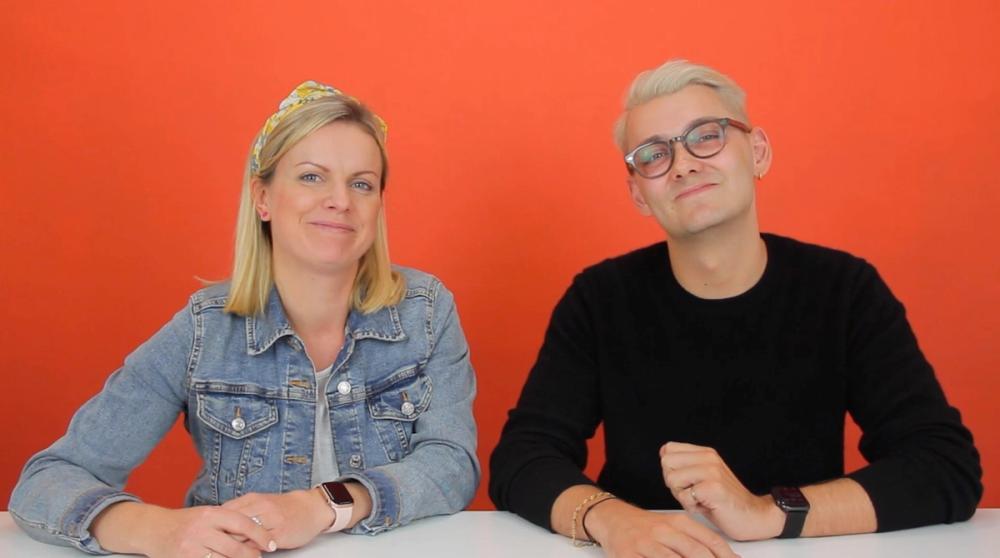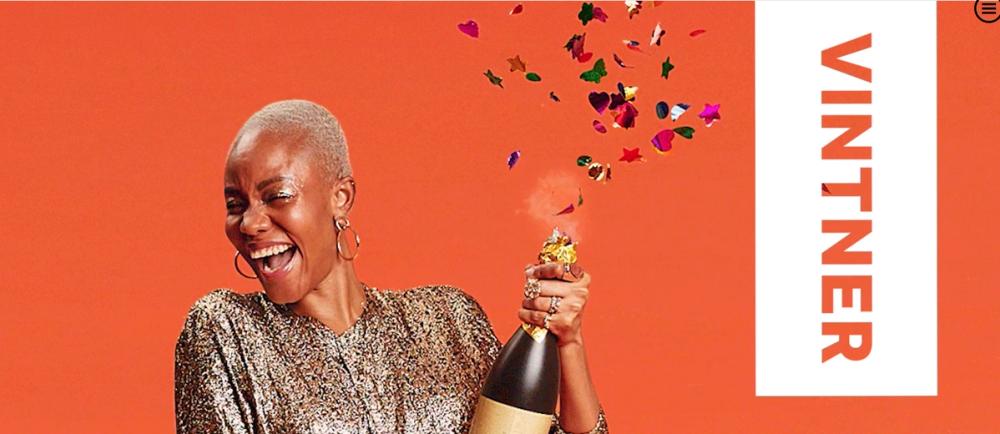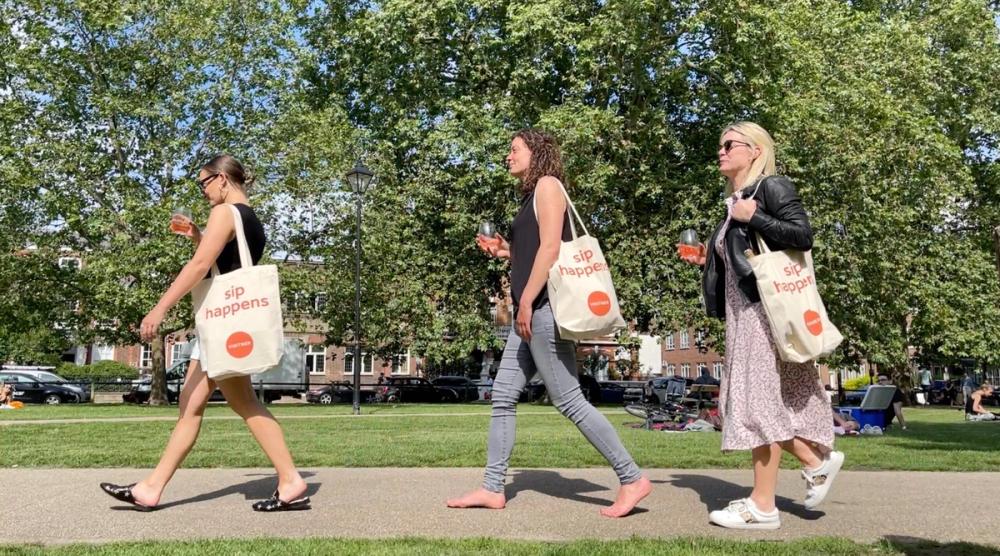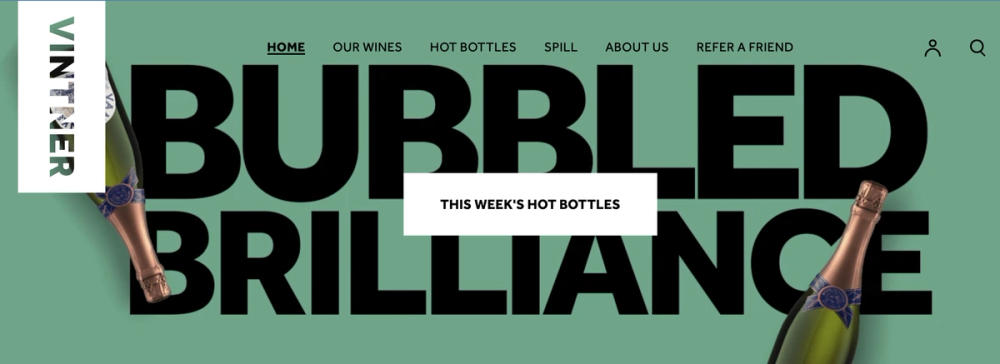Wine for all, people not egos, and no bullsh*t. The three core values of the new Vintner business set up by Julia Beran and Hamish Kirwan.
The first thing that strikes you about Julia Beran and Hamish Kirwan is how candid and refreshingly down to earth they are about the new e-commerce business they have created. Usually when you meet an online start up they are full of how clever they are and how they have the secret to selling wine online that no-one else knows.
Beran and Kirwan are too grown and canny up for that. They are also both well experienced figures in the wine industry who know how far they can go with the marketing talk about their new business, simply now called ‘Vintner’. A company that has evolved out of the previous ‘The Vintner’ that many will remember being founded and lead by Tom Gilbey – and Beran – from 2010 to 2021.

Julia Beran and Hamish Kirwan have transformed The Vintner business from B2B to B2C with a focus on making wines easy for interested consumers to buy
The idea of Vintner was formed in late 2019, and things moved quickly in early 2020 when Ellis Wines, the well-established family owned wine importers and on-trade specialists, came calling to see if the B2B side of The Vintner business was up for grabs. It could not have come at a better time, for Gilbey was already keen to explore his own tasting business model, and Beran and Kirwan werewell on the way to launching their new online wine operation..
They were also sensible enough to realise that switching from trade to consumer was a massive change in direction and not one to be taken lightly. To help them make that move, Beran and Kirwan were happy to talk to different branding and development agencies in order to challenge, test and trial the new business ideas they had.
Beran says the work they did with strategic brand consultancy, Saboteur, was crucial in helping them get to where they are today. It was the Saboteur team that suggested they simply dropped the ‘The’ and make ‘Vintner’ the driving force, the identity, for what the e-commerce model is all about. Where the ‘V’ has become a branding identity in its own right.
Here’s how the Saboteur team see the name: “Vintner is a window onto a more inclusive and colourful world of wine. A world that celebrates the joy of wine and simplifies not only how you buy it and enjoy it, but also how you understand it. No jargon. No bullsh*t.”
Simple, easy wine with no bullshit
Its approach fitted seamlessly with Beran and Kirwan’s conviction to make wine less complicated and easier to buy – with a core target audience of 25 to 45 year-olds. Where the entire focus on the wine team is to select stuffy free wines that are relevant to their target consumer and to talk to them in a language they can understand. Where the principle imagery is people enjoying wine wherever they may be rather than endless bottle shots.
Beran says if they want Vintner to “be your friend to help you buy wine” it needs to look right too. Which is why the imagery is all about people enjoying experiences with wine rather than vineyard pictures.
It certainly means the look and feel of the Vintner site stands out against traditional wine websites with its bright modern palette based on six bold colours.

Vintner’s website is all about people enjoying wine in different occasions – the mantra of the business
Beran says the switch to B2C might appear dramatic from the outside, but insists there had always been a desire within the old business to explore and build up a B2C arm, as it was clearly a growth area, but there was always too many other things to get distracted by.
“When the pandemic came it meant we had more time to prioritise and build up a proper business plan,” she adds.
Moving on
Although clearly very excited about the new business, both Beran and Kirwan are keen to stress how important it was for them that the spirit of the original The Vintner business should live on at Ellis Wines and many of the old team, including Gilbey for an agreed period, moved over.
“It was very much a natural progression for us,” says Beran. “We wanted to make sure our B2B customers had a new partnership with Ellis Wines and it is a perfect business to take it on.”
The formal, but amicable, split happened in October 2020 and Beran and Hamish have been B2C focused ever since. Although they clearly don’t like too much change at any one time as their new office is only a few yards down from the previous The Vintner office just off Parsons Green in Fulham, London.
As with any wine business the fundamental things to get right are the logistics and the supply chain and Beran and Kirwan were quick to ensure it had its distribution model ironed out from the start. To do so has meant joining London City Bond dedicated B2C arm so that it can ensure next day delivery minimum into London.
If they are to truly live up to their “buying wine easier” mantra they need to make sure they give plenty of packing and delivery options to their customers, says Kirwan.
Building a community
As well as getting the nuts and bolts of its supply chain right, Beran and Kirwan have also been working hard to build up what they call their Vintner community. It’s a lesson that Kirwan learnt during his time working in e-commerce in Australia. A community is essential if you are going to get B2C right. You need people talking about your brand and the drinks you are selling.
“When you are looking to do things differently you have to build a community to help support and build it with you,” he says. Building a brand more around the community of users you have and the experiences they are sharing about your wines is far more powerful than a technical analysis of the wine itself, he added. “Make it experience driven.”
Beran adds: “That is how you get the brand loyalty – through your community.”

Vintner want to build a community of drinkers that want to walk the same walk as them
Kirwan says they both get “frustrated that a lot of e-commerce is very wine centric where people are given so much information to go through”. He explains: “We know the next generation of consumers don’t want that. They are far more interested in where they are going to drink a bottle and who with. That’s why we want to focus far more on their lifestyles and on the experiential side of things. Have categories like ‘wine for a first date’ or ‘wine for the parents in law’. Rather than a traditional food and wine match. That’s what we mean by building a community.”
Wine Made Easy
So how do you go about making wine easier to buy online when there is also a need to have a big enough range to make the site interesting and interactive enough for your customers to want to use?
It all boils down, says Beran and Kirwan, to a few key factors:
- Make a wine easy to choose: Vintner’s challenge is to be able to describe and sell a wine using only four reasons. What are the four things about that wine that people need to know about to buy it? That’s it.
- Make it easy to buy: If you are payment system is too clunky people will give up and buy from somewhere else.
- Be aspirational: Make yourself a site a place where people feel comfortable visiting and create the right image for what you are looking to do.
- Create relevant and interesting content: This can be the hardest to do, but keep trying and listen to your audience to see what works and resonates with them. Interestingly two of the five-strong Vintner team are content that they purposefully brought in from outside wine to ensure they continue to use non wine language in their communications.
Beran says they also have the team at Saboteur to thank for their tagline – Wine Made Easy – which sums ups the values of the business and what they are looking to offer their customers.
The ‘Wine Made Easy’ tagline has also helped shape and drive how the team talks to its customers. They are working on a “Welcome” course for new customers to take that allows them to relax and ask any question about wine without feeling awkward or embarrassed. Any answers they give is done with the wine expertise very much toned up to make people feel comfortable.

The look and feel of Vintner’s website is very different from a traditional wine merchant’s imagery
Kirwan says it also uses SEO analysis on Google to see what are the most common search terms used about wine, which can then help them better understand what consumers are really interested in. One of the top search queries is all around storing wine rather than actually drinking it, he says.
Which is why any future subscription model could potentially include a three bottle option as well as the standard six and 12 to fit in with how people want to have wine around their house.
The more Vintner can understand about consumer behaviour and attitudes towards wine, the more it can shape its product offer to suit their needs, says Kirwan.
Beran adds: “Beer and spirits brands have done such a great job to make them relevant. We want to do the same. People don’t just want to wait until they are 40 before they start drinking wine. We know that 80% of 25 to 45 year olds want wine to be much easier to understand. That’s what we are here for.”
They are currently looking at how they can use influencers to draw in more of their target 25 to 45 year old audience and what impact they could potentially have.
Outside expertise
What is also refreshing about Beran and Kirwan is how willing they are to listen and take on advice from other sectors as well as in the drinks and wine industry.
“We are growing our board with people who are not in wine so that we can build up our expertise,” says Beran.
They have brought on board, for example, Richard Eagleton, chief executive of McQueens Flowers Group, that helps create displays for major events like the Oscars (also featured on The Buyer). They met through an executive networking body, The Supper Club, and she is looking forward to getting his insights on both running a business, but understanding consumers and their needs. There may even be opportunities to run wine and flower events that are all about what new experiences they could offer.
“Other sectors are hugely important to us,” adds Kirwan, “like the cosmetic industry. There people don’t even know what he product is going to be like until they put it on their skin. It has such similar issues to wine so there is much to understand and discover about how cosmetic brands talk to consumers online.”
They are looking at what sort of cross promotions they could run across the health and beauty sectors and what sort of tie-ins they can forge with other sectors.
The range

Vintner’s buying policy is determined by the “do I want another glass of this” motto
With no designated wine buyer, choosing which wines go on the list is very much a team effort. The key criteria when tasting a new wine for the list is “do I want another glass of this”. It is a wine’s drinkability and approachability that Vintner is looking for most.
It is also not dealing with exclusive wines, but wines they are confident are going to appeal to its core customer. Price points are mid to premium with the most expensive wine being a Nyetimber at around £35.
“Our business model is to sell wine from UK suppliers, so we are not tied into long term commitments working with producers direct,” explains Beran. “It means we can add new wines when we need.”
Which essentially has meant ramping up relationships they previously helped with suppliers to The Vintner and looking at more ways they can work together. But there is also the option of introducing some of its own wines under its own name next year, adds Beran.
Another key criteria for selecting a wine is how sustainable it is and what it is doing to “give back” to the planet and its community as they know they are core values of its target customer base.
“We want to work with wines that are as sustainable as possible,” says Kirwan.
Which also means it is open to trialling out alternative packaging to glass, be it cans, bag in box or whatever else may be available.
Whatever they do Beran and Kirwan are out to make choosing and buying wine easy. Oh and easy to enjoy too.
- You can find our more about Vintner here.
































